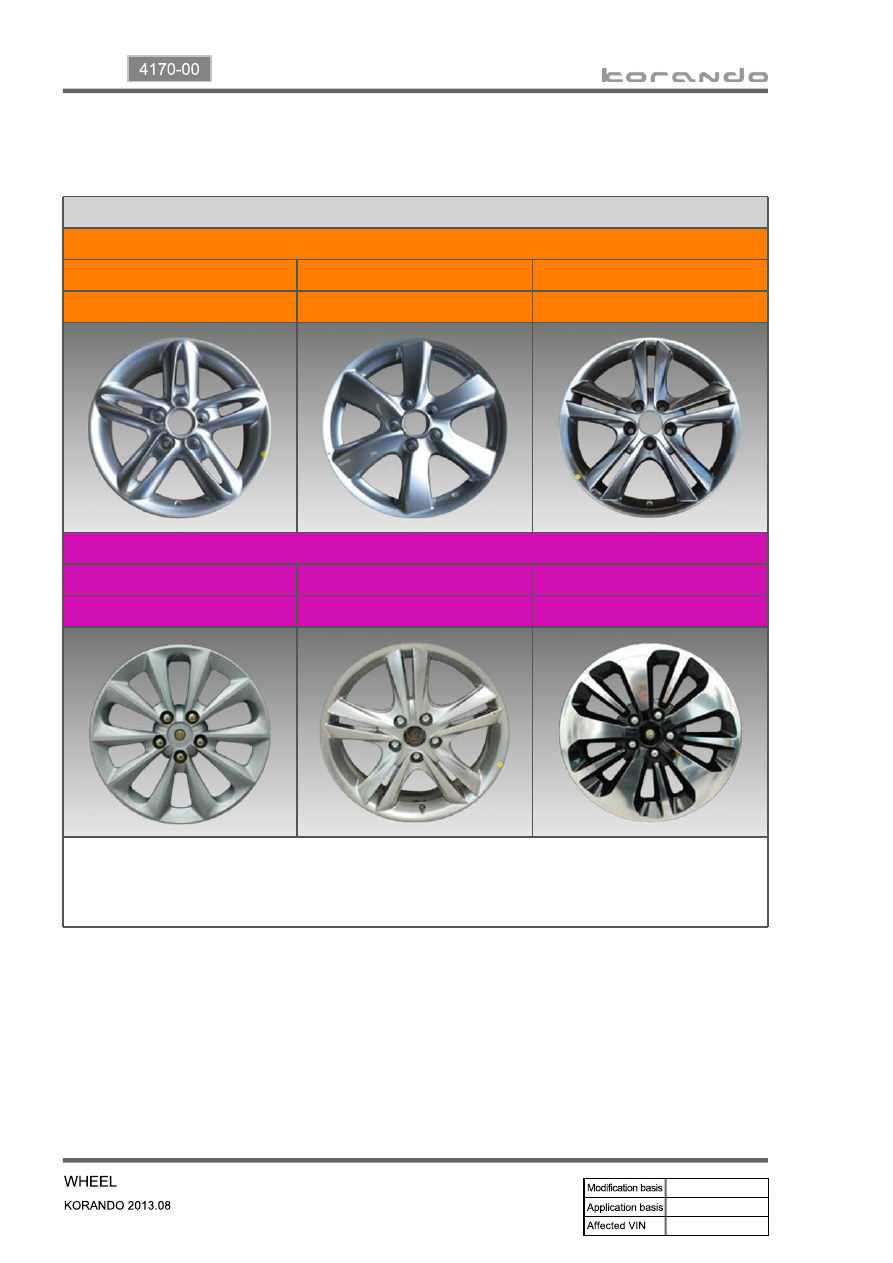SsangYong Korando III (2010 year). Manual - part 560

15-4
Wheel assembly changed
▶
Wheel Assembly
Old
16-inch Silver
17-inch Silver
18-inch Hyper silver
PN: 41730-34000
PN: 41730-34100
PN: 41730-34220
New
16-inch Silver
17-inch Silver
18-inch Diamond cutting
PN: 41730-34200
PN: 41730-34300
PN: 41730-34400
- 16, 17 and 18-inch wheel assembly design changed
(For 17-inch: existing 18-inch design used)
(For 18-inch: Hyper silver type → Diamond cutting type)
- Wheel offset and tire size same as before
2. MAJOR CHANGES